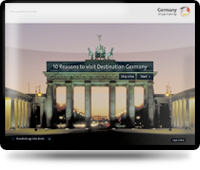Mythology / Magical places / Pilgrimages
- Castle Frankenstein
- The secrets of the Externsteine
- The legendary Kyffhäuser caves
- Goseck Sun Observatory
- Early sacrificial site at the geographical heart of Germany
- Witchcraft and Walpurgis Night
- The temple of Isis and Mater Magna in Mainz
- Ohlsdorf Cemetery in Hamburg
- Nebra Ark
- Mysticism, healing and ritual practices at Mount Untersberg
Early sacrificial site at the geographical heart of Germany
Contact:
E-Mail: [email protected]
Internet: http://www.opfermoor.de/
Travel Planner
Select an option...
Travel
A4, B247, Mühlhausen train station
 Skip to content
Skip to navigation
Skip to subnavigation
Skip to search
Skip to content
Skip to navigation
Skip to subnavigation
Skip to search




